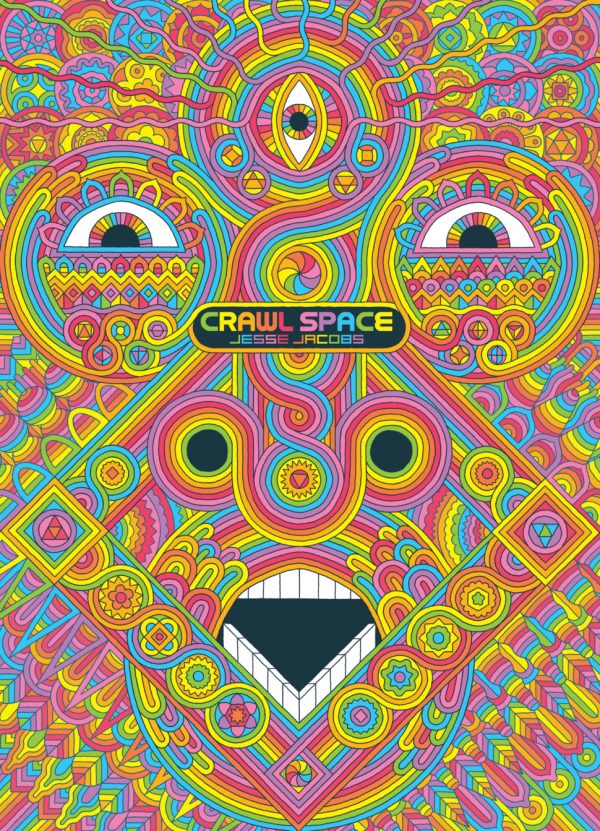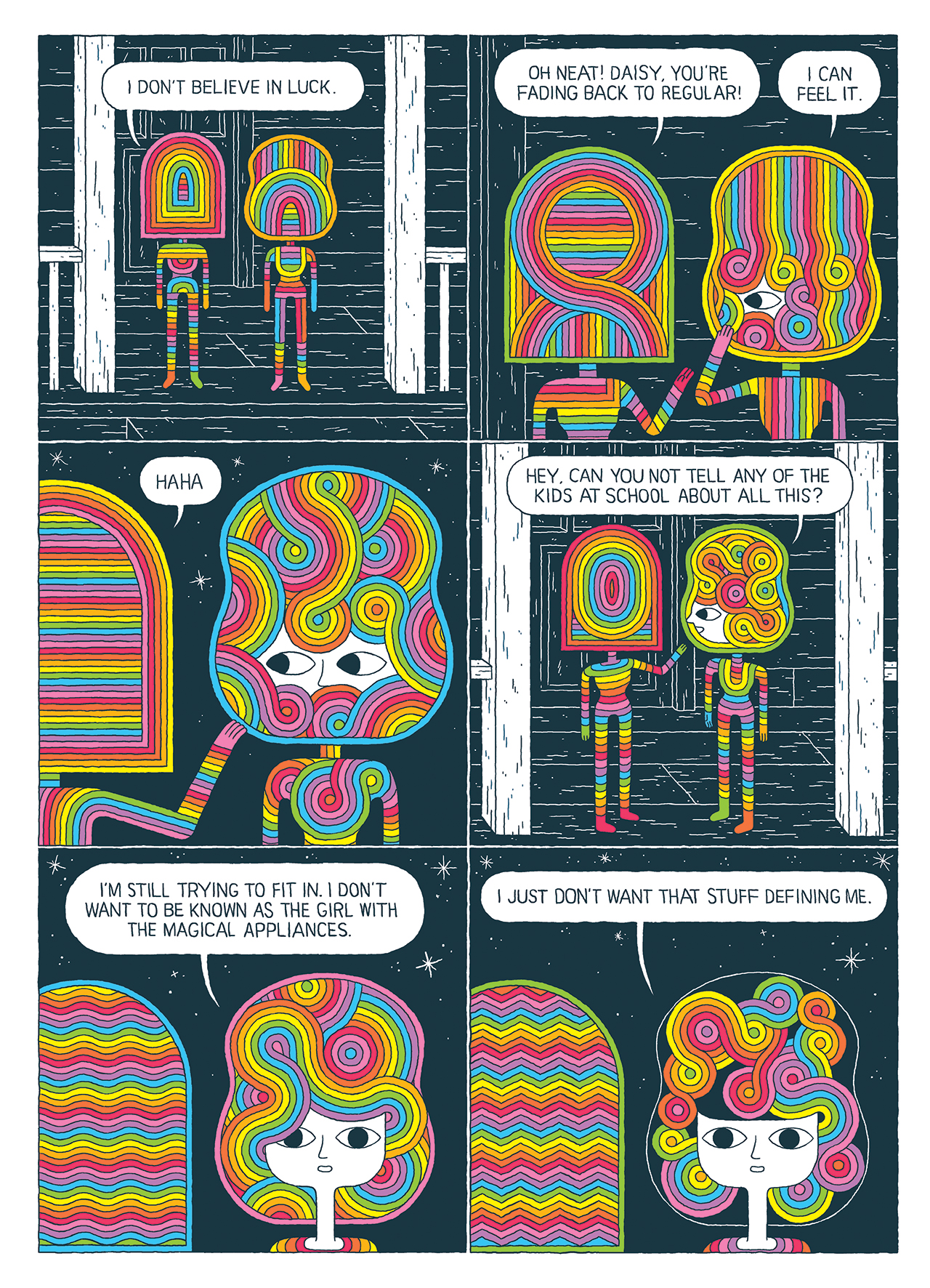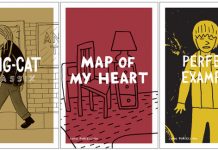I have a feeling that quite a lot of us would rather be somewhere else these days. It wouldn’t be so bad to be trapped in a place that was separate from the logic and awareness that we understand and accept as our own universe. If it was a place where perception changed in such a way that perception itself was an alien state for us, that would probably be okay.
That’s exactly what happens Jeanne-Claude and Daisy in Crawl Space, Jesse Jacobs’ psychedelic exploration about being displaced from everything we consider to be the way things are.
Daisy is new to town and her only real friend is Jeanne-Claude, but when we first meet them, we have no idea any “real” world like that exists. Instead they are wandering through the surreal landscape rendered by Jacobs where geometric psychedelia dominates the space you walk through, the creatures you encounter, and even who you are. The friends have a human-ish form, but they are engulfed by the colorful, incomprehensible lines that define this entire universe. This is the universe as optical illusion, where you are just another part of the meticulous confusion.
But our universe is its own kind of optical illusion, too, one where friends may not be exactly what they appear. In the real world Daisy is told by Jeanne-Claude that she has to hide that her basement contains the entry way to this strange other universe. But Jeanne-Claude just uses this opportunity to be the one who reveals the wonder to other kids in order to impress them, and as the two continue on their journeys to this other universe — an act akin to a combination of tripping and finding enlightenment — others get become involved and the special secret between the two has been cheapened. What at first felt like an almost spiritual high becomes just another clump of teenagers looking to escape the world through intoxication.
In telling this story Jacobs does a great job in walking the line between a emotionally realistic teenage drama and an abstract cautionary fable about the different things people want out of life. Daisy finds something mysterious in her basement and wants to explore it. By the end of the book, we see that this kind of escape and transformation is not a passing phase for her, but something she is ready to embrace and enter into on its own terms. That may be the right thing to do, or the wrong thing to do, but it doesn’t seem like Daisy’s interested in numbing herself with it. It seems like she wants to go to the next level. Others are just flirting with that for a quick cure to boredom, dissatisfaction, but Daisy is making a tough choice — and even if it might engulf her in the end, it is at least a stance that is a retreat from the challenges of life.










Comments are closed.